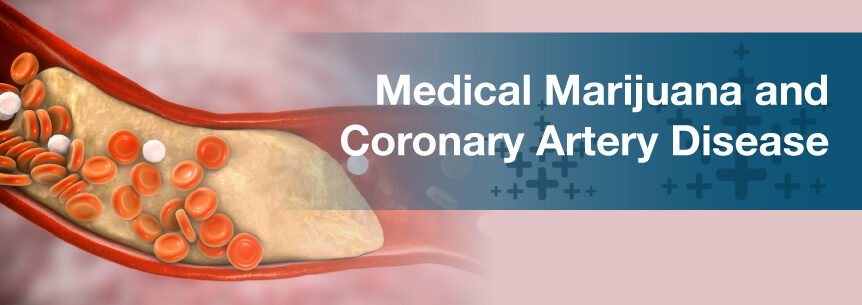
Cannabis is presently among the most frequently used drugs worldwide. With today’s continuous process of states approving medical weed for an increasing number of qualifying conditions, it’s appropriate to review marijuana for coronary artery disease (CAD).
Coronary artery disease (CAD), also called coronary heart disease (CHD), is a common form of heart disease. It is the leading cause of death for both men and women in the United States.
Your arteries are usually elastic and smooth, but they accumulate plaque on their inner walls over time, making them more narrow and rigid. When this happens, blood flow isn’t able to reach your heart muscle, starving it of oxygen. You could then suffer a heart attack or, worse, sudden cardiac death due to the plaque rupturing.
Plaque can cause the inner walls of your blood vessels to become sticky. Other things can then travel through your bloodstream and combine with this plaque. Some of these include:
As more inflammatory cells mix in, as well as cholesterol, you experience an increase in plaque — all of which pushes your artery walls outward and then grows inward, narrowing the vessels. A narrowed coronary artery will eventually create new blood vessels to reroute the obstruction to deliver blood to your heart muscle. But if you’re stressed or pushing yourself too hard, these new arteries might not be able to provide your heart muscle with enough oxygen-rich blood.
Sometimes, a blood clot can keep your blood supply from reaching your heart muscle when the plaque ruptures, causing you to have a heart attack. If a blood clot blocks a blood vessel to your brain, you may experience an ischemic stroke. If this brain blood vessel bursts, it could lead to high blood pressure or uncontrolled hypertension, causing a hemorrhagic stroke.
Research reported by Harvard Health Publishing reveals when you take a low-dose aspirin daily, it could keep you from having a stroke or heart attack if you’re at risk for heart disease.
The Cleveland Clinic explains three primary types of coronary artery disease:
You could have any one of several of these, including:
Unstable angina:
This could be a change from, or new symptom of, stable angina. Angina could:
Although oral medications like nitroglycerin can help relieve this, it’s still unstable and could lead to a heart attack. Generally, doctors need to use more aggressive medical treatment to treat unstable angina.
ST Segment Elevation Myocardial Infarction (STEMI):
A type of MI or heart attack caused by a sudden obstruction in your blood supply is known by the acronym STEMI. It impacts a large area of your heart muscle and can cause ECG changes or changes to your blood levels of essential chemical markers.
Non-ST Segment Elevation Myocardial Infarction (NSTEMI):
This represents a type of MI or heart attack that does not cause significant ECG changes. But there are blood chemical markers revealing damage to the heart muscle. The blockage in NSTEMI can be temporary or partial — therefore, the amount of damage is generally small.
Even though some individuals have symptoms indicating they could develop an acute coronary syndrome soon, others might not have any symptoms until something occurs — and then there’s some who don’t have them at all. Any acute coronary syndrome requires immediate medical attention and treatment.
As the size of the coronary artery’s blockage increases, collateral circulation may form in the narrowed coronary artery. Collateral circulation is where new blood vessels develop and reroute the blood around the obstruction. But when there’s increased stress or exertion, the new vessels might not be sufficient for the heart’s needs.
Ischemia is the cramping of your heart muscle. It occurs when you have a narrowed coronary artery, where it’s unable to provide the heart with enough oxygen-rich blood. Therefore, your heart muscle is actually “starving” for oxygen.
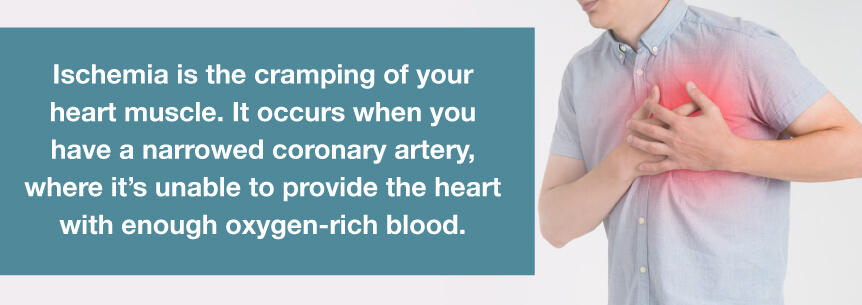
When your heart demands extra oxygen, this is when ischemia is likely to occur. Ischemia occurs most often during stress, exertion, exposure to cold or while eating.
Like a heart attack, ischemia can occur without giving off any warning signs. When this happens, it’s called “silent” ischemia and occurs among all individuals who have heart disease. It’s more common in individuals with diabetes, however.
Around 3,500-year-old Egyptian mummies showed indications of heart disease, particularly atherosclerosis known to narrow the arteries. In 1203 BCE, Pharaoh Merneptah had atherosclerosis. Among the 16 mummies researchers studied, nine of them had indications of the condition.
Leonardo da Vinci (1452-1519) researched coronary arteries.
The doctor of King Charles I, William Harvey (1578-1657), discovered the path in which blood moves.
University of Halle’s chief professor of cardiology, Friedrich Hoffmann (1660-1742), made a note that coronary heart disease began in the decreased blood passage in the coronary arteries.
When you have narrowed coronary arteries, they can’t deliver your heart enough oxygen-rich blood, particularly if your heart is beating hard due to exertion. At first, the reduced flow of blood might not cause any symptoms of coronary artery disease. However, as plaque continually builds up in your arteries, you could develop signs and symptoms of coronary artery disease, such as:
Coronary artery disease can cause complications other than angina and heart attack, such as:
Research is continuing, but currently suggests psychological factors play a prominent role in chronic physical conditions — especially coronary heart disease. Depression, anxiety and coronary heart disease often occur together, but until now there hasn’t been much information about their relationship with one another.
Depression
Depression puts coronary heart disease patients at risk of mortality and morbidity, particularly after acute coronary syndrome. Many studies show depression often results in cardiovascular events becoming worse, patients being re-admitted to the hospital and even coronary heart disease-related death. Patients with coronary heart disease (CHD) often develop depression. In fact, evidence shows depression is 20 percent higher in heart failure patients than in individuals who are healthy.
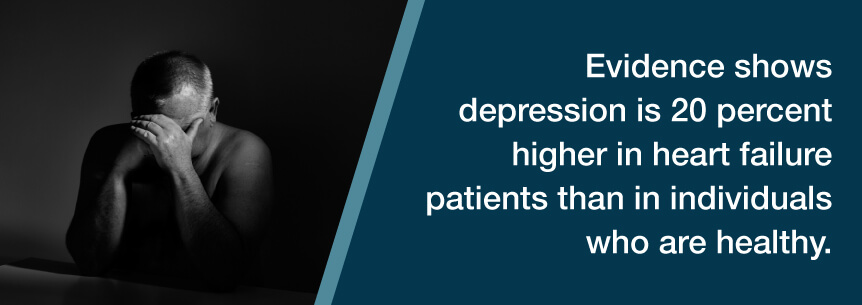
Anxiety
Even though research shows anxiety negatively impacts CHD patients’ prognoses, when it’s not combined with depression, its role of being a risk factor in causing CHD isn’t clear. However, during a systematic review, researchers evaluated cardiac death, myocardial infarction (MI) and other clinical endpoints in 12 studies. Five studies showed substantial association and three showed slight substantial associations.
Researchers conducted a survey about psychological and physical anxiety symptoms in CHD patients that showed anxiety correlates with certain physical factors like:
All increase the risk of CHD, particularly in women.
Statistics reported by the Centers for Disease Control and Prevention (CDC) about coronary artery disease include:
Although currently there’s no cure for coronary artery disease, technology today makes it easier to manage effectively. Treatment for coronary artery disease involves lifestyle changes and, potentially, some medications and medical procedures. Lifestyle change recommendations include exercising regularly, quitting smoking and consuming a healthy diet.
Medications include:
While there are positives about cannabis and coronary artery disease, some caution is in order. Some scientists state cannabis affects cardiovascular health. Those who smoke the herb experience chest pain more quickly while under stress than they would without smoking it.
Cannabinoids have complex effects on your cardiovascular system, including:
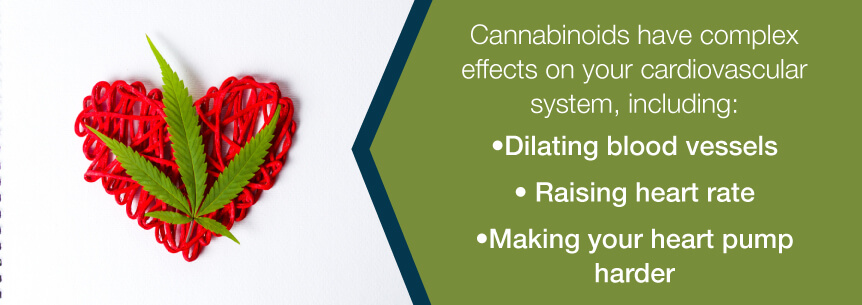
Researchers also say your risk of heart attack in the hour you smoked cannabis is nearly five times higher than what it usually would be. However, the cardiovascular effects of marijuana aren’t well studied.
This is partly due to marijuana being a Schedule I substance under federal law, indicating there’s currently no legally-acceptable medical use for the herb and it has high abuse potential. Because of this, researchers find it difficult or impossible to rigorously research cannabis.
Almost instantly after you consume marijuana, it affects your blood pressure. However, while your blood pressure does fluctuate right after you consume the herb, cannabis does work as a potent vasodilator. This could be welcome news for people with high blood pressure because hypertension is a risk factor for heart disease.
Scientists are researching CBD, cannabis’ nonpsychoactive cannabinoid, as a possible heart failure therapy.
The British Journal of Pharmacology published a 2013 review showing the potential for CBD. CBD helped reduce vascular tension in rodent models. Vascular tension strains the blood vessels unnecessarily. CBD, according to the review, also helps protect your arteries from glucose (sugar) damage.
Cannabis Reduces Inflammation
Also recorded in the review was that marijuana decreases diabetes-related inflammation. When your blood vessels have inflammation, it puts a substantial strain on your heart.
Cannabis Prevents Atherosclerosis
Still more research today shows cannabinoids offer a protective role in atherosclerosis, an inflammation-causing coronary artery disease. Cannabinoids work as anti-inflammatory agents and thereby help regulate your immune system and assist with proper function.
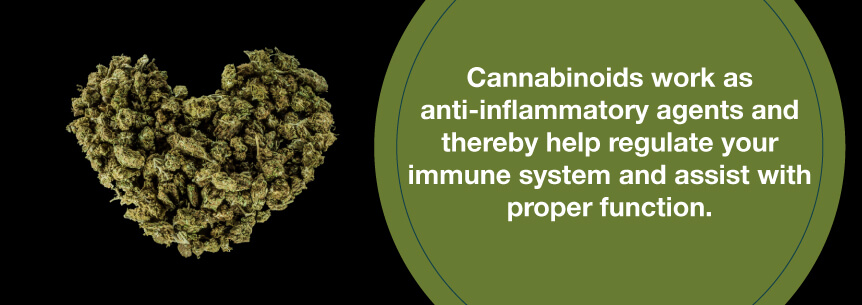
Some symptoms medical marijuana for coronary artery disease can help treat include:
Talk to your doctor about the benefits of medical cannabis for your heart health.
Cannabis and coronary artery disease treatment works well to not only treat the symptoms of the condition itself but also the unpleasant side effects of its treatment, such as nausea, muscle pain, fatigue, headache and more. Therefore, you’ll want to look for strains to help alleviate most, if not all, of these effects. Some strains already shown to help with these effects include the following:
Strains for Pain:
Strains for Anxiety and Depression:
No matter what delivery methods of medical cannabis for coronary artery disease you use, you always want to start with low doses of the herb and gradually take in more until you experience the full effect you’re looking for. Some common marijuana and coronary artery disease delivery methods include:
For more information on cannabis for coronary artery disease, make MarijuanaDoctors.com your single stop for everything you need to find a marijuana-certified doctor who will help point you in the right direction. Contact us if you need assistance on your road to relief from the symptoms of coronary artery disease or any other approved condition you may be struggling with. Search for a medical marijuana doctor and find a cannabis dispensary today.
Find A Doctor Find A Dispensary